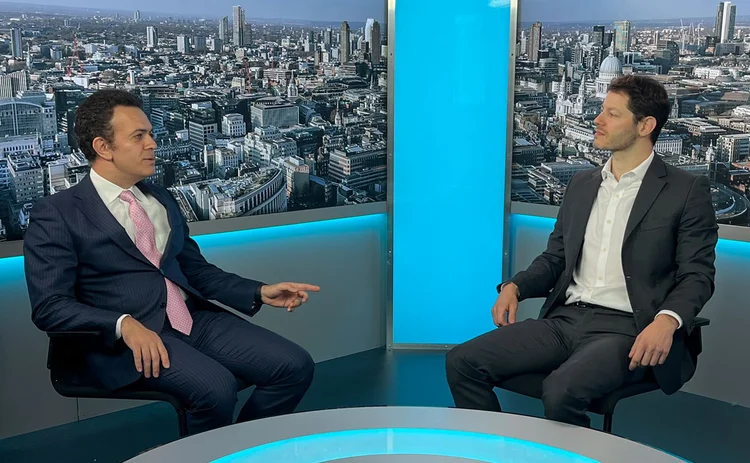Podcast: Lorenzo Ravagli on why the skew is for the many
JP Morgan quant proposes a unified framework for trading the volatility skew premium

In his epic poem The Divine Comedy, Dante Alighieri combined the regional dialects of his time to create the modern Italian language, a unifying tongue that could be understood throughout the land.
Fellow Florentine Lorenzo Ravagli, head of European FX volatility strategy at JP Morgan, jokes that his latest paper tries to do for volatility trading what Dante did for the Italian language, by proposing a unified framework for harvesting the skew premium in options.
Ravagli presents a range of strategies for trading the skew premium, which is driven by the asymmetric pricing of out-of-the-money calls and corresponding puts. The simplest possible way of taking a view on the skew premium is through delta-hedged risk reversals, he explains. But the complexity of this strategy can increase significantly if traders consider more advanced sensitivities, such as the exact location of the strikes or the sensitivities of the maturities.
“Across different trading desks, [I found that] different people were using different metrics for proposing a tentative explanation of the P&L of a very basic skew position,” Ravagli says. This gave him the idea to propose a common standard: “I've tried to vulgarise some concepts that were somehow expressed in a very theoretical framework and bring them down to a language which could be accessible by a wider range of clients.”
In his paper, Ravagli introduces two theoretical – yet practical – concepts for unifying the different approaches to trading the skew premium. One links the first-order sensitivities of an option price to changes in the implied parameters, namely the value of the skew or the volatility of volatility. The other is a proxy expression for the vol of vol’s term structure. This curve is inverted so short-dated vol of vol is structurally much higher than longer-dated vol of vol. These concepts, Ravagli says, can allow traders to more accurately capture the P&L of an options portfolio.
Ravagli explains how to implement a risk reversal strategy to capture the skew premium. “A risk reversal is simply a position which buys a call and sells the put, or it does the opposite, depending on which of the two volatilities is higher,” he says. He also explains how to delta-hedge, rebalance, account for transaction costs and monitor the strategy over time.
Ravagli plans to conduct further research into this topic. One avenue that remains to be explored is the diversification effect such strategies could have on multi-asset, multi-strategy portfolios.
His unified framework for trading the skew premium could help popularise the strategy. But can it really compare to Dante’s masterwork? Let’s hope we don’t have to wait seven centuries to find out.
Index
00:00 Intro
01:30 The role of a quant strategist
06:00 The volatility skew
10:36 The theoretical innovations in skew trading
17:17 How to set up a skew trading strategy
24:57 Transaction costs and market impact
30:13 The skew premium in other asset classes
35:59 Skew strategies in a diversified portfolio
42:32 Future research
To hear the full interview, listen in the player above, or download.
Only users who have a paid subscription or are part of a corporate subscription are able to print or copy content.
To access these options, along with all other subscription benefits, please contact info@fx-markets.com or view our subscription options here: https://subscriptions.fx-markets.com
You are currently unable to print this content. Please contact info@fx-markets.com to find out more.
You are currently unable to copy this content. Please contact info@fx-markets.com to find out more.
Copyright Infopro Digital Limited. All rights reserved.
As outlined in our terms and conditions, https://www.infopro-digital.com/terms-and-conditions/subscriptions/ (point 2.4), printing is limited to a single copy.
If you would like to purchase additional rights please email info@fx-markets.com
Copyright Infopro Digital Limited. All rights reserved.
You may share this content using our article tools. As outlined in our terms and conditions, https://www.infopro-digital.com/terms-and-conditions/subscriptions/ (clause 2.4), an Authorised User may only make one copy of the materials for their own personal use. You must also comply with the restrictions in clause 2.5.
If you would like to purchase additional rights please email info@fx-markets.com
More on Trading
MAS official flags risks in Asia’s path to T+1 settlement
Regulator says region faces “unique challenges” in establishing a shorter settlement cycle
All that glisters: precious metal volumes surge on FX venues
Gold and silver liquidity on foreign exchange trading platforms improves as more dealers link precious metals with e-FX
CME futures outage caused FX spot pricing problems
At least one non-bank was forced to pull prices, and NDFs also affected
From market-makers to matcha: 10 years on an FX desk
Nathan Vurgest from Record reflects on how much change there really has been in FX in the past decade
BofA, Reactive Markets pick up Risk.net awards
US bank wins FX house for performance during Liberation Day, while Reactive Markets takes OTC trading platform prize
Inside Safran’s $54bn FX options book
French aircraft parts supplier emerges as key exotics player
NatWest retunes options tool to create, not hedge
Auto-hedging algo replicates non-linear exposures in spot for clients that can’t trade options
Market-makers near limit for lira carry-based options trades
FX Markets Europe: Questions around liquidity, market risk and crowding constrain new Turkey flows








